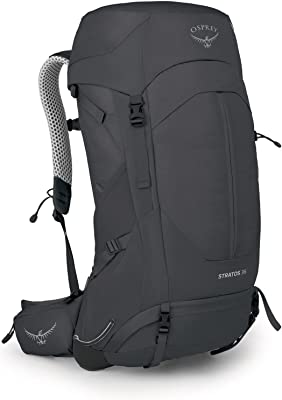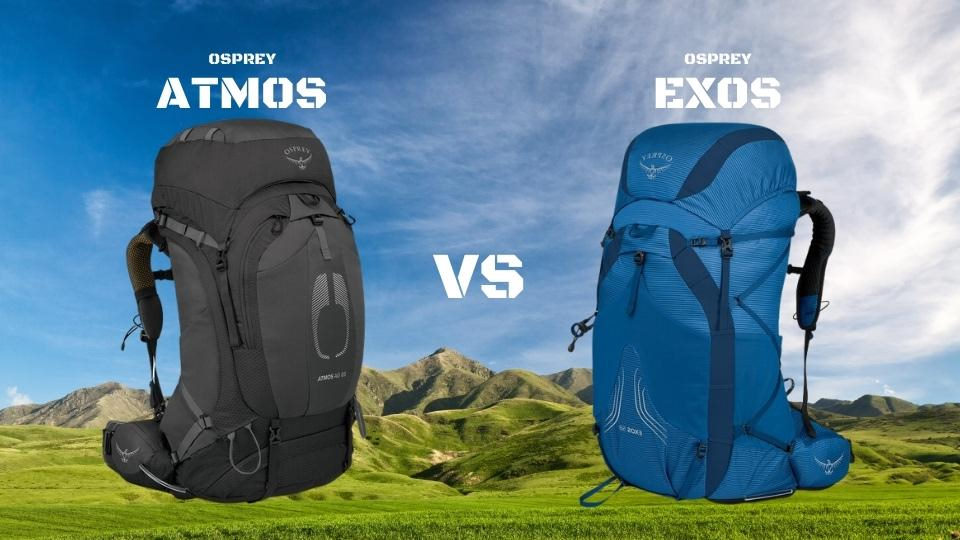Introduction
Finding the proper type and volume for your needs is a crucial step in purchasing a backpack. Consider the gear you actually need before selecting your pack. Bring only what is absolutely necessary or can serve another purpose. You may use your pot as a dish, bowl, and cup as well. Your dry pajamas can also serve as your change of clothes.
Your backpack must fit comfortably on your body because you use it for hours, and it is heavy. The incorrect backpack might make your trek miserable. This is a lengthy essay about selecting the ideal pack, but we believe it is worthwhile for you to read because it will save your back and neck pain.
A trek can be ruined by an unpleasant pack that breaks or otherwise fails you. The key distinctions between the Osprey Stratos 36, Stratos 50, and Kestrel 38, Kestrel 48 are discussed in this review. Choosing between these Osprey and Kestrel backpacks can be challenging because they are designed similarly.
Both brands are created with the same intent. With these, you can backpack for a night as well as go on day hikes. Both vehicles have ample room to accommodate a large amount of equipment for these uses. They do not, however, have exactly the same features or the same size.
Their designs are identical at the most fundamental level, but, for instance, compared to the Stratos 36, the Kestrel 38 has a few more characteristics. Let’s start by going through the fundamentals of these backpacks step by step.
Stratos 36
The OSPREY Stratos 36 is the ideal size for all of your supplies when day walks turn into longer, more involved excursions. Packing is made simple by the Stratos 36 by OSPREY’s top-loading design, which is topped by a permanent top lid.
Additionally, it encourages long days and light nights spent exploring the most difficult routes, come rain or shine, thanks to its highly ventilated AirSpeedTM suspensions system and just enough volume to empower your broader pursuits, produced entirely from recycled materials.
Stratos 50
Breathable, functional, and durable, the Stratos range is a highly breathable and comfortable hiking backpack. Featuring an adjustable torso length for improved fit and comfort in an updated aesthetic, the Stratos 50 is perfect for overnight trips or multi-day light hikes.
The Stratos 50’s key distinguishing characteristic is that it offers side access to the main compartment. Perhaps you’ve positioned the compression straps, so you don’t have to remove the top zipper. Through the side zipper, you may easily access the compartment holding the gear.
By separating the pack from your back and providing an air space, this feature allows for the most ventilation. Because of this, the Stratos 50 is a fantastic pack for hotter temperatures or brisk outdoor activity. Don’t worry if the weather changes – the Stratos protects your gear and pack with an integrated rain cover. Smartly organized pockets keep all your gear where you need it when you need it.
Kestrel 38
The Kestrel 38 is equally valid despite being smaller than its larger sibling. The Kestrel is an unbreakable companion created from robust materials that can withstand demanding days in the middle of nowhere and is ideal for brief overnight journeys or lengthy outdoor days that don’t require much room.
Ideal for those who must navigate dense woodland or for outdoor professionals who require a reliable backpack under all circumstances. Two attachment points for ice tools, a Stow-on-the-Go trekking pole holder, an integrated rain cover for rainy days, side and front mesh pockets for gear storage, and an external tank compartment are additional useful features.
Kestrel 48
The tough Kestrel 48 is designed to carry big equipment in challenging situations on short overnight trips or long days outdoors. Without the ability to modify the torso length to help you find your ideal fit and the AirScape back to give ventilation whether you’re working hard or not, an Osprey wouldn’t be an Osprey.
The presence of an external hydration sleeve on the Kestrel 48 is a significant factor in the decision to buy it. For this backpack, do you wish to get a hydration pack? Although it isn’t included, it can be used with any Osprey hydration pack. The Kestrel might be right for you if you prefer to stay hydrated with a hydration pack to water bottles.
Also, we adore the daisy chain attachments and a front panel that come with the Kestrel 48. This enables you to hang additional equipment on it, such as a cycling helmet. The integrated rain cover can be opened at the first sign of inclement weather.
The Stow-on-the-Go trekking pole holder allows you to store the poles when you have to move through dense vegetation or climb using your hands and feet. The main compartment with a side zipper means you don’t have to empty your entire pack when you need to get something.
Stratos 36 and Kestrel 38
Both the Osprey Stratos 36 and the Osprey Kestrel 38 are multi-day hiking backpacks designed for all-purpose use. Although they serve the same purpose, the two backpacks differ in terms of comfort and features.
The Osprey Stratos 36 and Osprey Kestrel 38 include suspension systems that let you shift weight from your back to your hips. They are both comfortable backpacks. Both backpacks have a mesh back so that your back will stay dry even on prolonged excursions.
The mesh water bottle holders on each side of the Stratos 36 are not horizontally accessible, therefore, you must remove your pack to load and unload it. Additionally, it has fewer external gear attachments.
The Kestrel 38 is slightly better vented than this one, though, and it also has an extra front zipped pocket. Kestrel 38 and Stratos 36 are both suited for day hikes and sporadic overnight camping. It’s challenging to misjudge either of them.
Stratos 50 vs. Kestrel 48
Most people agree that the Kestrel 48 is a more expensive Stratos 50 alternative. In comparison to the Stratos, it has additional bells and whistles. I would advise you to choose the Stratos 50 over the Kestrel 48 unless exceptional external gear attachment capability is absolutely necessary for you.
The front zipped pocket will be more useful because the equipment won’t be forced into it by the oversized main compartment bulging outward to the front. Additionally, you’re more likely to desire excellent ventilation when transporting 48–50 liters of equipment in warm weather as opposed to 36–38 liters.
Stratos 36 and 50
The front zipped pocket on the Stratos 36 and Stratos 50 adds to the overall number of pockets (7, including the main compartment and sleeping bag compartments) so you may keep more commonly used things close at hand. Contrary to the Stratos 36, the Stratos 50 allows for mobile access to water bottle holders.
This pocket is not to be confused with the front pouch. Contrary to the front zippered pocket, the front pouch is also available in the Kestrel series. Additionally, they provide slightly better airflow than the Kestrel’s. They are more suited to use in warm weather if you will.
Kestrel 38 and Kestrel 48
This pocket is absent from the Kestrel 38 and 48, bringing the total number of exterior pockets to 6, plus the main compartment and sleeping bag compartment, less than Stratos by one pocket. However, they have better external gear attachment capacity.
They are ideal for securing snowshoes, ice tools, and other items. Due to this and other factors, the Kestrel is a superior choice to the Stratos for wintertime activities. They also perform somewhat better when it comes to evenly dispersing the weight across your complete body to ensure more efficient carrying.
Conclusion
Wearing one of these backpacks, Stratos 36, Stratos 50, Kestrel 38, or Kestrel 48, is enjoyable, and they easily accomplish their task. The AirSpeedTM suspension technology, which offers fantastic fit and incredible airflow, is what can be appreciated most about it. Due to this, the backpack always seems light despite the amount of weight packed inside it.
You will love this pack even more now that it has several access points and a lot of internal and external compartments. Aside from everything else, you can put your sleeping bag and pad in a convenient location for the nights spent outdoors. The rain cover will protect the gear if you trek on a rainy day.
Yes, the cost is a little high, but so is the value you get in terms of comfort and quality. Purchase a pack that is the perfect size for you, enables you to bring everything you actually need, has some additional space for safety gear, and can hold enough weight for the distances you intend to travel. In short, you probably won’t find a better option for the money. Enjoy your journey with the best backpack you choose.








